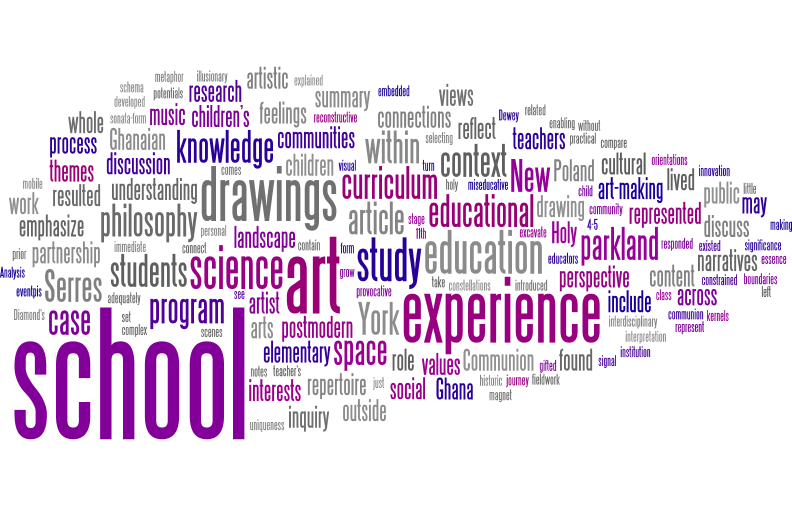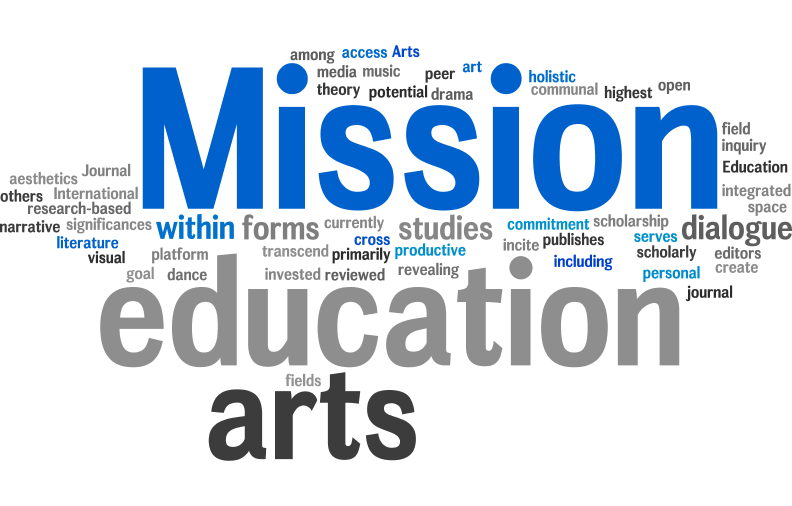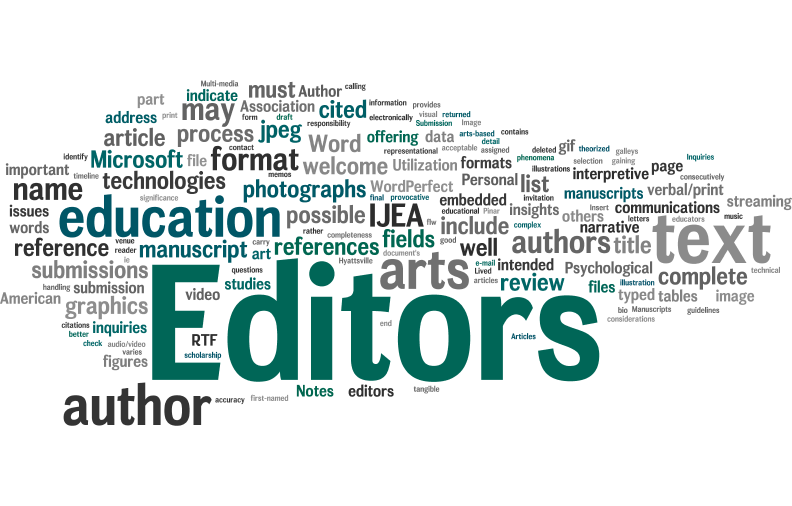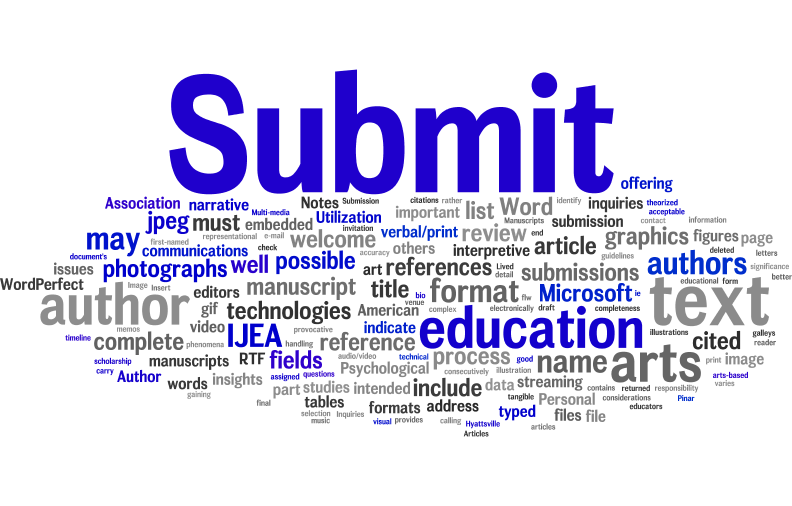2002 Volume 3
Articles and Abstracts

Articles
Volume 3 Number 1: Margaret Meban: "The Postmodern Artist in the School: Implications for Arts Partnership Programs"
In this article, I reflect on my experience as a visual artist working in an elementary school as part of an arts partnership program. Specifically, I discuss how in making art in the public space of a school institution I found myself censoring the content of my work, which resulted in a shift of the style and purpose of my art-making, and ultimately, altered the nature of the educational experience for students. Working from a reconstructive postmodern perspective of artistic practice within the context of a public school which enacted a conservative curriculum orientation I found myself engaging in a process of self-censorship by selecting themes and issues that would not be considered controversial within the context of this elementary school. Perplexed by the direction my work and educational role should take I began to accommodate the immediate interests of the students which resulted in a studio program that emphasized the basic skills of drawing and painting with little attention paid to the social function of art. By considering curriculum orientations that a school may enact and the values and philosophical assumptions that underpin them, along with the positions of the current postmodern art world, I discuss the complex position that the artist may occupy in the school while participating in an arts partnership program.
Volume 3 Number 2:
Christine Marme´ Thompson "Celebrating complexity:
Children's talk about the media."
Volume 3 Number 3: Michalinos Zembylas "Of Troubadours, Angels, and Parasites: Reevaluating the Educational Territory in the Arts and Sciences Through the Work of Michel Serres."
This article examines Michel Serres' philosophy of the "educated third" and considers his views on a philosophy of communication. Serres' interdisciplinary writing constructs themes that can be traced across literature, philosophy, science, mythology and art, borrowing ideas and approaches from them and transforming those into original, provocative and synthetic voices that cut across traditional disciplinary boundaries. Serres' views provide a refreshing perspective to educators, especially, those in art education and science education and advocate a reevaluation of some contemporary educational ideals to emphasize invention and imagination.
Volume 3 Number 4: Cheryl J. Craig: "The Shadows of New York: A Continuing Inquiry into the School as Parkland Metaphor."
Drawing on a theoretical framework centered on Clandinin and Connelly's (1995) metaphor of a school as a "professional knowledge landscape" and Diamond's (2000) idea of schools and inquiry being thought of as "parkland," I employ the "story constellations" (Craig, 2001) approach to excavate narratives of community, school and reform, both given and lived at Cochrane Academy, a Grade 4-5 magnet school located in a historic African American neighborhood in the mid-southern US. These stories set the stage for an art-making experience that occurred in a 5th grade art class in the heels of the events of September 11th. I show that metaphoric parkland connections existed between scenes of New York City and Cochrane's storied landscape prior to the tragedy. These illusionary commonplaces gave rise to the Shadows of New York healing mural that became a mobile parkland space which, in turn, was gifted to the people of New York. Throughout the inquiry, I emphasize the critical relationships between and among art, education and social justice and signal how vitally important these connections are in enabling constrained situations to be lived, and responded to, in educative, as opposed to miseducative, ways (Dewey, 1938).
Volume 3 Number 5: Nancy Dibble & Jerry Rosiek "White Out: A Case Study Introducing a New Citational Format for Teacher Practical Knowledge Research."
This case study describes a biology teacher who comes to see her European-American racial identity as mediating her attempts to counsel Mexican-American students to pursue further science education. The teacher's journey to this understanding involves reflection on the structure of the science curriculum, on her personal history, and dwelling on uncomfortable feelings that contain kernels of insight that eventually grow into deeper understanding. The authors consider the whole of this process, and not just some specific conclusion that can be represented in form of summary propositions, to be the content of the practical knowledge the case study conveys. To represent this kind of knowledge adequately, this case study uses a "sonata-form" that has been introduced and explained in other articles. To this it adds the innovation of side notes, a system of notation designed to connect teachers' narratives with research from outside their experience without suggesting that teachers' experience is derivative of that research.
Volume 3 Number 6: Stokrocki & Samoraj "An Ethnographic Exploration of Childrens Drawings of Their First Communion in Poland."
This ethnographic study explores what some children in Poland represented in drawings of their first Holy Communion, how they developed them, and the significance of the drawings. We describe, analyze, and compare drawings as a whole and with findings from other studies on child artmaking. Description includes the Holy Communion experience in general, the ritual in Poland, the Corpus Christi procession, the school context and related lesson. Analysis focuses on theme, schema, color, and space usage. Drawings do not express content--deep religious feelings but reveal other aesthetic interests in massive churches and decorative details. Conclusions include summary of elements of the eventpis uniqueness, discussion of what was left out of the drawings, and alternative explanations which include limited drawing abilities, gender differences, outside influences, power relations, ritualistic role of the ceremony, and the essence of holy communion and the children's drawings.
Volume 3 Number 7: Dzansi "Some Manifestations of Ghanaian Indigenous Culture in Children’s Singing Games"
This article discusses some Ghanaian cultural values and expressions that are embedded in children’s playground repertoire. The discussion is based on the description and interpretation of some of the songs children performed for me during my fieldwork in Ghana in 2001. Ghana has embarked on school reforms and policies to make school music reflect the culture of the local communities. As I analyzed some children’s repertoire within the cultural contexts in the Ghanaian indigenous communities, it is evident that the playgrounds and homes are fertile grounds for tapping and honing their artistic potentials to enhance and transform music performance in the classroom and beyond.



